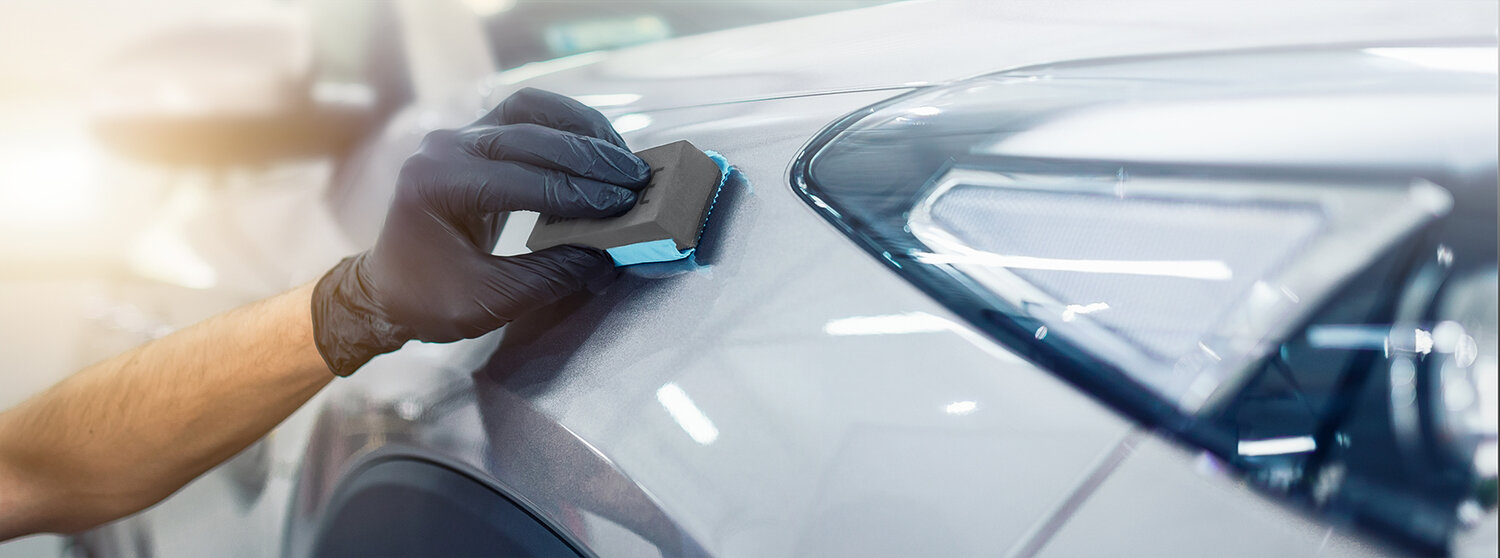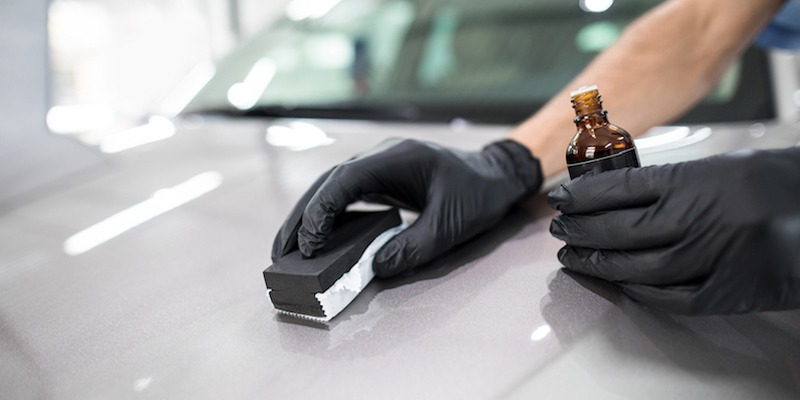Actual Customer Testimonials on the Benefits of Ceramic Coating for Cars
Actual Customer Testimonials on the Benefits of Ceramic Coating for Cars
Blog Article
The Value of Ceramic Coating: Safeguarding Your Automobile's Outside With Precision
In a period where maintaining the practical and visual integrity of your car is extremely important, ceramic covering emerges as a critical remedy. With its distinct bonding properties, ceramic covering provides a degree of protection that far exceeds standard waxing approaches.
Advantages of Ceramic Coating
When it comes to protecting a vehicle's aesthetic allure, ceramic layer uses substantial benefits. By forming a semi-permanent bond with the vehicle's paint, ceramic coatings properly stop oxidation and fading, making certain that the automobile preserves a glossy, showroom-like coating for a prolonged period.
Along with its protective top qualities, ceramic finishing offers impressive hydrophobic buildings, triggering water and other fluids to bead off easily. This function simplifies the cleansing process, as dirt and debris are much less likely to stick to the surface, lowering the regularity and effort required for upkeep. Moreover, the layer's resistance to chemical spots from acidic contaminants like bird droppings and tree sap is an additional noteworthy advantage, minimizing potential paint damages.
Ceramic finishes also improve scrape resistance, offering a layer that can soak up small abrasions and swirl marks. This characteristic is especially advantageous in preserving an excellent surface area, reducing the likelihood of noticeable imperfections and protecting the integrity of the auto's paintwork over time.

How Ceramic Finishing Functions
Recognizing the auto mechanics behind ceramic covering exposes its efficiency as a safety remedy for vehicles. Ceramic finishes are basically liquid polymer applications that chemically bond with an auto's manufacturing facility paint, developing a safety layer. This layer acts as an obstacle against environmental pollutants such as dirt, gunk, and ultraviolet rays, which can deteriorate a cars and truck's outside gradually. The crucial component in ceramic finish is silicon dioxide (SiO2), which stems from quartz crystals and is recognized for its phenomenal solidity and toughness.
Application of ceramic covering involves a meticulous process. This shield improves the automobile's gloss and hydrophobic residential or commercial properties, promoting simpler cleansing by causing water and pollutants to bead and slide off easily.
Furthermore, the layer's molecular structure supplies resistance to small scratches and chemical spots. Unlike waxes or sealers that rest on top of the paint, ceramic finishings incorporate with the surface area, offering resilient protection. This combination is essential to its performance, ensuring the automobile's coating stays pristine for many years.
Comparing Ceramic Coating to Alternatives
In the realm of automobile protection, ceramic covering stands as a powerful choice when compared to conventional options such as waxes and sealers. While waxes offer a temporary lustrous coating, typically lasting just a couple of weeks to months, ceramic finishes supply a longer-lasting option, commonly withstanding for many years. This toughness is credited to the chemical bonding that happens when ceramic finishes are applied, forming a strong layer that is immune to environmental risks.
Contrastingly, sealants, although even more durable than waxes, still fall short of the robust security supplied by ceramic coatings. Sealants can typically last for as much as a year, supplying an artificial guard versus specific elements. However, they do not have the exceptional hydrophobic residential properties and UV security that ceramic finishings supply.
In addition, ceramic finishes supply boosted scrape resistance, which neither waxes nor sealers can efficiently match (ceramic coating). This is specifically valuable in keeping a cars and truck's beautiful look. Additionally, ceramic finishes simplify upkeep efforts by lowering the adherence of dirt and gunk, therefore assisting in less complicated cleansing. In recap, while traditional waxes and sealants supply basic security, ceramic coatings provide a comprehensive, lasting remedy that considerably boosts and preserves the car's exterior surface.
Application Process Explained
Applying ceramic finishing to a car needs a thorough process to make sure optimal results and resilience. The initial step includes completely cleaning up the cars and truck's surface to remove dirt, oil, and previous waxes. This site is essential for making sure the finish adheres correctly. A pH-neutral shampoo and a clay bar therapy are usually used to achieve an immaculate surface area. When cleaned, the vehicle is dried out and brightened to remove any type of flaws, as any type of existing swirls or scratches can become much more pronounced after the finish is used.
Adhering to surface prep work, the application of the ceramic covering starts. Making use of an applicator pad, the ceramic layer is applied in small areas to ensure even insurance coverage.
After application, the coating requires a certain healing period, during which the automobile needs to be protected from water and contaminants. This healing procedure can vary depending on the product however normally varies from 24 to 2 days. Inevitably, this thorough process is pivotal in accomplishing a durable and shiny coating.
Upkeep Tips for Longevity
To maintain the longevity of a ceramic coating, adherence to a disciplined maintenance routine is vital. Routine cleaning is vital; use a pH-neutral cars and truck hair shampoo and soft microfiber gloves to prevent abrasions. Prevent automatic automobile washes, as their extreme brushes can jeopardize the finish's stability. Instead, select a hand laundry to guarantee comprehensive yet gentle cleaning.
Post-wash, drying out the vehicle with a clean microfiber towel prevents water areas that may break down the finish with time. In addition, use a ceramic coating booster every few months. These boosters reinforce the hydrophobic residential properties and improve the coating's safety abilities, ensuring it continues to be efficient against impurities.
Remember that vehicle parking locations play a critical function in maintenance. ceramic coating. Whenever feasible, park in shaded areas to decrease UV exposure, which can progressively compromise the coating. For long-term storage space, think about making use of a cars and truck cover for added security versus environmental elements
Final Thought
Finally, ceramic finish works as a vital protective layer for automobile outsides, using long-lasting defense versus ecological elements such as crud, uv, and dust rays. By forming a semi-permanent bond with the paint, it boosts visual appeal while protecting the car's worth. Its hydrophobic homes promote easier maintenance, differentiating it from different protective methods. Comprehending the application procedure and sticking to upkeep recommendations are important for maximizing the longevity and performance of ceramic covering.
When it comes to maintaining an auto's visual allure, ceramic layer supplies substantial advantages. By Click Here forming a semi-permanent Learn More Here bond with the vehicle's paint, ceramic coatings properly protect against oxidation and fading, making sure that the cars and truck preserves a glossy, showroom-like coating for a prolonged period. Ceramic finishes are essentially liquid polymer applications that chemically bond with an auto's manufacturing facility paint, creating a safety layer. In summary, while standard waxes and sealants offer standard security, ceramic coverings offer a detailed, long-term service that considerably enhances and protects the vehicle's exterior surface.

Report this page